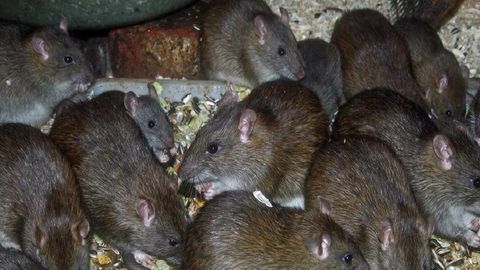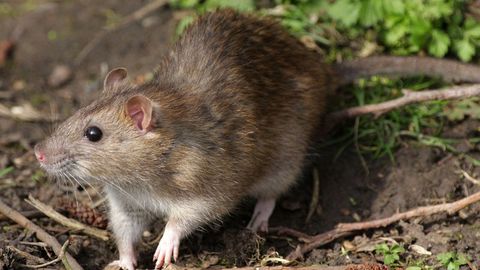RAT CONTROL SERVICES
RAT CONTROL SERVICES
Rats are small mammals. There are 5000 mammals in the world, of which 2000 are rodents. A rat has a single pair of incisor teeth present on both its top and bottom jaws which are chisel shaped. There life expectancy is less than 18 months. The gestational period of a rat is just 3 weeks and the size of their litter is between 7-8 babies at a time. They have between 3-6 litters per year. Rats usually eat around 30g of food per day which is the equivalent to one 10th of its body weight. They eat around 10 meals per day at around 3g per meal and drink between 30-60 ml of water each day depending on how moist the food is that they eat. A rat will usually produce up to 40 droppings in a day and will do this as it moves around. Some of the signs to show that you have a rat infestation are rat burrows and rat runs, droppings, damage to property from gnawing, smear marks and urine (smell).
WHAT DAMAGE CAN RATS DO?
Their teeth do not have roots meaning that they grow continuously, because of this they constantly gnaw to file them down. They like to gnaw on hard objects such as wood, however they are also partial to electric cables and water pipes. They are very capable of chewing through fascia boards, kitchen units, plaster and uncured concrete.
Rat urine carries a disease called Leptospirosis (also known as Weil’s disease). Rats urinate as they go about their usual business, coming into contact with, for example your surfaces, thus putting you at risk of you contracting it. In heavy infestations where a lot of droppings are present can also pose a serious health risk as this can be inhaled by humans leading to respiratory distress and pneumonia, in worse cases maybe even contracting Hantavirus.
HOW DO I GET RID OF RATS?
Something to be considered when dealing with rat infestations is to always ensure that you are complying with the law. There are laws around how you can safely and humanely eradicate a rodent infestation. Taking into consideration the use of rodenticides purchased by the general public and not only the risk to themselves and others around them, but also that of secondary poisoning of none target species, this is when a rodenticide is placed down in the wrong way allowing other animals to consume it which in most cases would prove fatal. Using a rodenticide when you are not a professional in the wrong way can land you in hot water.
Incorrectly using this could lead to you being fined up to £5000 and being handed up to a five year prison sentence. As a professional company we always ensure that we follow the principles set out in the Campaign for Responsible Rodenticide Use (CRRU). The use of glue boards and certain traps are also strictly regulated by the Wildlife and Countryside Act 1981 and also The Pest Act 1954.
If you do decide to carry out a self-treatment using rodenticides or traps within a building, it is good advice to pay particular attention to the presence of bats and their roosts. Bats are heavily protected under UK law and if caught using traps or rodenticides near them or even disturbing them, it is certain prosecution which may lead to imprisonment.
HOW WE EFFECTIVELY REMOVE RATS
Effective rodent control requires a combination of measures including surveys, proofing, habitat manipulation, sanitation and control techniques. Please visit our rodent page for more information or contact us to discuss your treatment options. We also recommend using a strong disinfectant and the removal of all waste following a rodent infestation. Details of how we can help with this can be found on our cleaning page.
NEED HELP WITH
WASPS? CALL OUR EXPERTS NOW FOR A
PEST INSPECTION








